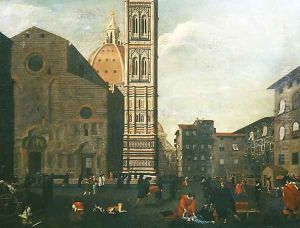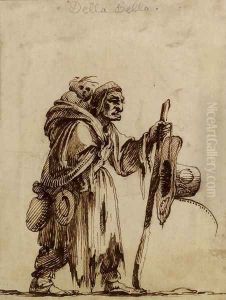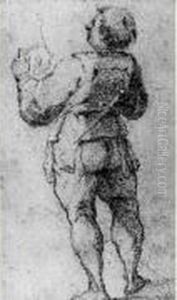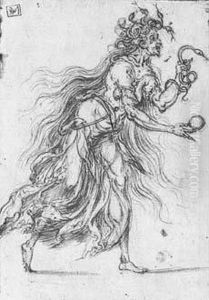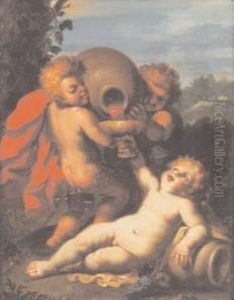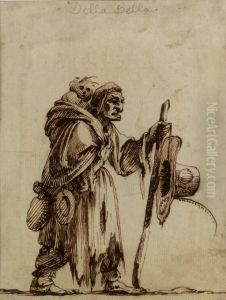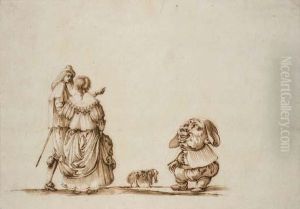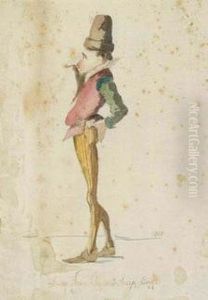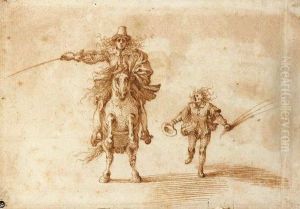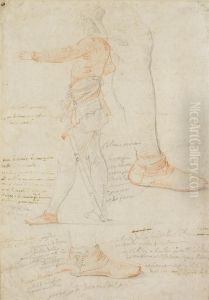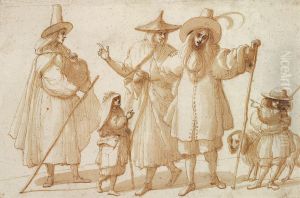Baccio del Bianco Paintings
Baccio del Bianco (1604-1656) was an Italian painter, architect, and stage designer of the Baroque period, known for his versatility and innovative designs. Born in Florence, Italy, he was initially trained by his father, a sculptor, before moving on to study painting under the guidance of prominent artists of the time. His early works were influenced by the Mannerist and early Baroque styles, showcasing his skill in both religious and secular subjects.
Baccio's talents were not limited to painting; he was also a skilled architect and stage designer. His architectural works included designs for churches and palatial residences, blending traditional Italian elements with the emerging Baroque sensibility. However, it was in the theatre that Baccio truly excelled, creating elaborate stage sets that captivated audiences and brought drama to life. His stage designs were known for their intricate details and innovative use of space, making him a sought-after designer for theatrical productions across Italy and beyond.
Throughout his career, Baccio del Bianco worked in various cities, including Florence, Rome, and Madrid, where he was employed at the Spanish court. His time in Spain was particularly productive, resulting in numerous commissions for both stage designs and architectural projects. Despite his success abroad, Baccio remained deeply connected to his Florentine roots, often incorporating elements of his native city's art and architecture into his works.
Baccio del Bianco's contributions to the arts were not limited to his professional achievements. He was also known for his involvement in intellectual circles, engaging with artists, writers, and thinkers of his time. This interaction with contemporaries allowed him to stay abreast of the latest artistic trends and theories, which he incorporated into his works.
Sadly, Baccio del Bianco's life was cut short when he died in 1656. Despite his relatively brief career, his legacy lived on through his innovative designs and contributions to the development of Baroque art and architecture. Today, Baccio del Bianco is remembered as a multifaceted artist whose works continue to inspire admiration for their creativity and technical skill.
